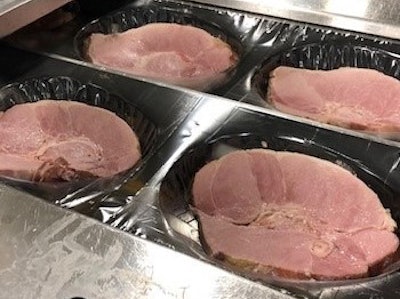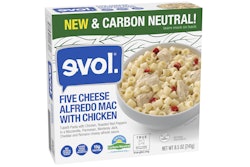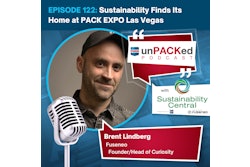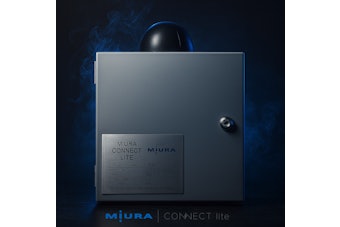Smithfield Packaged Meats, in Kinston, N.C., has a company-wide goal of 75% Zero Waste to Landfill. Because of the difficulty finding plastic recyclers in the area, an important part of that goal is to find ways to prevent plastic waste in the first place so that it doesn’t end up in the local landfill.
“A large amount of the solid waste generated at the Kinston plant is plastic waste,” says Charlie Prentice, environmental coordinator for Smithfield Packaged Meats. “This waste fills up our two compactors and requires us to have them pulled numerous times per week at less than the maximum fill weight.”
Smithfield’s winning project focuses on reducing that plastic waste, in this case from its Bone-in-Ham Wet Pack area, where the company runs steak lines. The steaks are cut from the center of hams, and then a conveyor carries the steaks to the pack machine, which is loaded with plastic film to create individual pockets. Employees place one ham steak in each pocket, and then the machine covers the pockets with preprinted film and seals the steaks for boxing.
“At times, employees were not filling all the pockets before the machine advanced. This could be due to line speed, fatigue, or inexperience,” Prentice says. “When these pockets are not filled, the wasted plastic/film from those empty pockets is collected as trash and sent to the landfill.”
The solution that Smithfield settled on after talking with contractors was to install cameras above each line. If the camera detects any empty pockets, it does not let the line advance until all pockets have product in them.
“This system greatly reduces plastic/film waste,” Prentice says, adding that it also reduces the number of times each week the compactors have to be pulled. This not only reduces the amount of plastic sent to the landfill, but also reduces the fuel burned by the hauler.
Since production rates change from year to year, the facility used the variance report to determine cost savings, but a moderate estimate of film waste reduction so far is 75%, Prentice says, providing an ROI of just under a month. The cost for the three cameras was $18,000, but the facility expects to save about $167,000 in forming film each year along with more than $2,000 in landfill costs.
The cameras were basic plug-and-play models, making it easy for the maintenance department to install and operate. The key concern was how to hang the cameras on the equipment. A mounting system had to be be fabricated and installed over the equipment to center the camera. Stainless steel pipe was bolted to the floor and the piping raised enough to provide the height and centering needed and also keep it out of the way of production employees and nighttime sanitation crew.






















